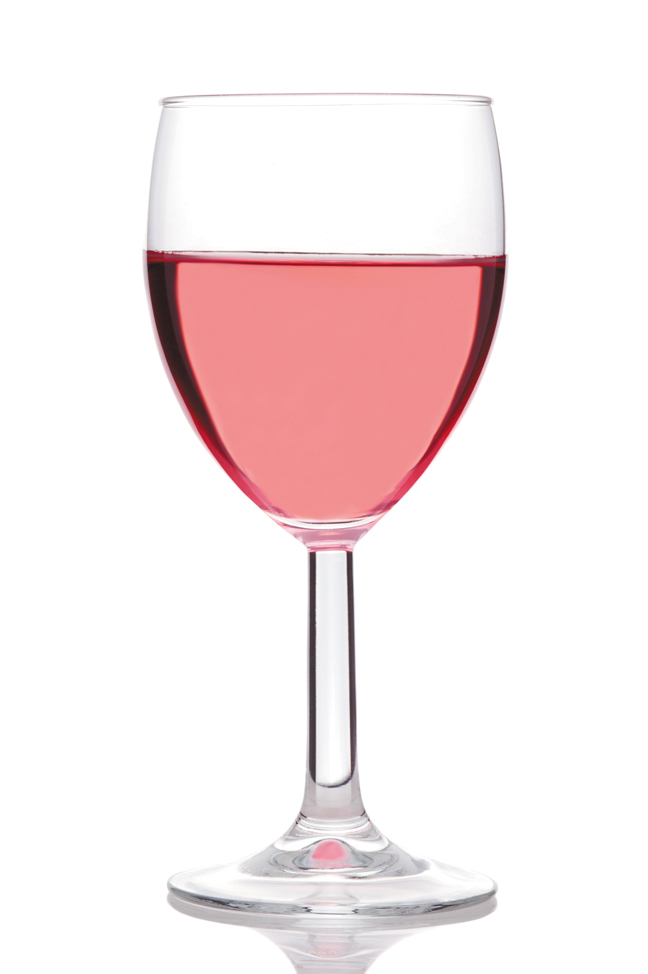What pairs better with summer than an icy cold glass of rosé wine? As the temperatures rise so does the demand for rosé wine, now a firm favorite from sea to shining sea. Summer is the perfect time to let down your hair, slip on your bikini, and pop open the rosé.
But why rosé? Why not? Rosé is the ultimate summer wine. It’s pink in color and beautiful to the eye, floral and perfumed to the nose, and fruity but dry on the palate. Rosé’s refreshing acidity is bracing and cleanses the mouth between bites of food. Rosé is made from red wine grapes and takes its color from the skins. Depending on which variety of grapes is used and how long the grape skins are left in contact with the juice, the resulting wine can range from a pale, onionskin color to a deep, almost red hue. The finished color has nothing to do with the quality or intensity of the wine.
Rosés can range from light to full- bodied, fruity and tangy to crisp and bone-dry, zippy and light to lush and smooth. Rosé is meant to be enjoyed young. Buy it and drink it, don’t save it for a rainy day or stick it indefinitely in your cellar. A still rosé wine should be no more than 3 years old. Sparkling rosé Champagne is the only exception to the rule, and has the ability to age in a temperature-controlled cellar.
The United States showed up late to the rosé party. In fact, the USA was a little tardy to the wine party altogether. Unlike Europe, which has a history of wine consumption going back thousands of years, America was never much of a wine drinking nation until halfway through the 20th century. More Americans preferred cocktails to wine, and wine took a decided backseat to hard alcohol.
The US population started drinking sparkling pink wine back in the 1940’s with sweet wines like Mateus and Lancers, but these were not “serious” wines. They were created specifically for the sugar-loving American market, rather like Coca-cola for the older crowd. Dry wines were not favored and wine pairing with food was unheard of at the time.
Sutter Home’s White Zinfandel blasted onto the scene in 1975 after a fortuitous winemaking error. The fermentation of red zinfandel grapes got “stuck”, leaving the alcohol levels low in the resulting wine, while the residual sugar levels flew sky high. The producers almost threw out the “bad” batch, but in the end, they decided to bottle it and throw it onto the market, just for fun. Imagine their surprise when everyone went crazy for this festive pink wine! Americans loved it! Sutter Home’s sugary White Zinfandel went on to define rosé for most Americans.
The grand success of White Zinfandel made most Americans assume that all pink wines were candy sweet and rather one-dimensional. Rosé as a class of wines became gauche and more discerning wine sippers avoided it. Americans eventually went on to greater wine sophistication and learned the joys of dry rosé. Today the United States is the greatest wine-consuming nation in the world. Sutter Home’s White Zinfandel is still very popular, but at last, fine, dry rosé wines have taken their rightful place in the hearts of Americans.
Rosé pairs effortlessly with just about everything but truly shines when matched with classic picnic foods such as cheese and charcuterie, sandwiches and quiche. Casual bistro food is a perfect fit with rosé. It’s a wonderful accompaniment to savory fried calamari, briny oysters, crispy French fries, and juicy hamburgers. While we think of rosé as a summer wine, served lightly chilled at the shore, it can easily be enjoyed throughout the year with heavier seasonal fare like stuffed turkey and roasted salmon.
Most restaurants now offer several different rosé wines on their wine lists. Some historic French rosés to seek out include Domaine Ott and Bandol from sunny Provence, and beautiful Tavel, from the Southern Rhone Valley. An all-time favorite produced right here in California is Bonny Doon’s Vin Gris from the Santa Cruz mountains.
So, what are you waiting for? Break out the pink! Cheers!

Leave a Reply